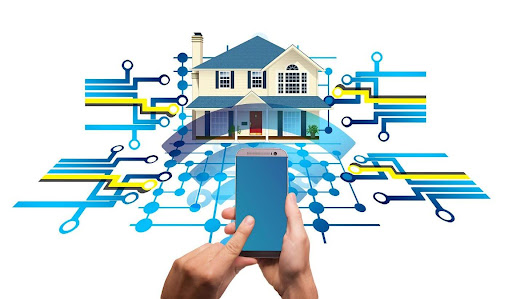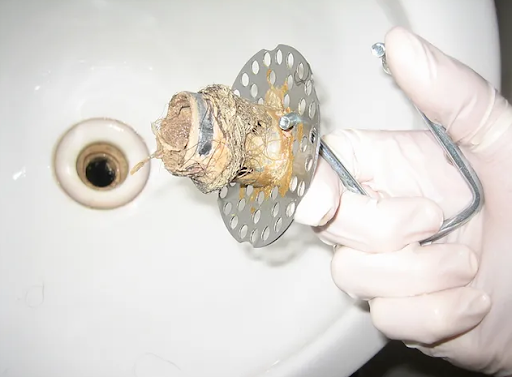The concept of a smart home, also known as a connected or automated home, revolves around using technology and various smart devices like Smart Locks, Smart thermostats, Smart lights, etc., to make our lives more comfortable, efficient, and secure. It’s about creating a living environment where technology seamlessly enhances our lifestyle, providing convenience at every turn. In a smart home, devices communicate and can be controlled remotely, ensuring that our homes are more responsive to our needs and preferences.
In today’s fast-paced, technologically driven world, smart homes have become essential to modern living. They represent the epitome of technological advancement, combining elements of automation, remote control, and artificial intelligence to create a living environment that fits your lifestyle. Whether it’s adjusting the temperature, controlling lighting, managing household appliances, or enhancing home security, smart homes make it all possible with a simple voice command or the touch of a button.
Whether you’re a tech enthusiast eager to explore the latest advancements, a homeowner looking to make your home more convenient and secure, or simply curious about how smart homes can enhance your lifestyle, this guide is for you. So, let’s dive into the fascinating world of smart homes and discover how they’re shaping the future of modern living.
What is a Smart Home?
In the simplest terms, a smart home is a residence equipped with a variety of devices that automate tasks typically handled by humans. These devices are interconnected, allowing them to communicate with each other and the homeowner, often through a central hub or a smartphone app. This means you can remotely control various aspects of your home, even when you’re not physically present.
The smart home concept isn’t new, but it has evolved significantly over the years. Initially, the idea was centered around automation – having machines perform routine tasks to make our lives easier. For instance, automated washing machines and vacuum cleaners were some of the earliest examples of this concept. However, with the advent of the internet, wireless technology, and artificial intelligence, the concept of a smart home has expanded and become more sophisticated.
Today, a smart home goes beyond simple automation. It’s about creating an integrated system where all your devices are connected and can communicate with each other. This includes everything from your thermostat and lights to your security system and home appliances. All these devices can be controlled remotely through a single interface, such as a mobile app or a voice-activated assistant like Amazon’s Alexa, Google’s Assistant, or Apple’s Siri.
Key Components of a Smart Home
A smart home comprises various interconnected devices working together to create an integrated and responsive living environment. While the specifics may vary from one home to another based on individual needs and preferences, several key components are commonly found in most smart homes.
- Smart Home Hub: This is the brain of the smart home. It’s a central device that connects all your smart devices, allowing them to communicate with each other and you. Some popular smart home hubs include Amazon Echo (Alexa), Google Home, and Apple HomeKit. These hubs connect your devices and provide voice control functionality, enabling you to command your devices using just your voice.
- Smart Thermostats: These devices remotely control your home’s heating and cooling system. They can learn your schedule and preferences over time, adjusting the temperature automatically to save energy and ensure your comfort. Examples include the Nest Learning Thermostat and Ecobee smart thermostat.
- Smart Lighting: Smart lights can be controlled remotely, dimmed, or even change colors. You can set schedules for when your lights turn on and off or sync them with your daily routine or entertainment system. Examples include Philips Hue and LIFX bulbs.
- Smart Locks: A crucial component of a smart home is smart locks. They provide keyless entry remote access and can even send notifications when doors are opened or closed. Some models allow you to give temporary access to guests, and they can integrate with other smart home devices for automated routines, like locking all doors at a specific time.
- Smart Appliances: From refrigerators and washing machines to ovens and coffee makers, a variety of home appliances now come with smart features. These appliances can be controlled remotely, offer advanced functions, and provide usage data to help you use them more efficiently.
These components interact with each other to create a smart home ecosystem. For instance, your smart lights can turn on when your security system detects you’re arriving home, or your smart thermostat can adjust the temperature based on data from your smart sensors.
The beauty of a smart home is its scalability and flexibility. You can start with a few devices and gradually add more over time per your needs. Whether it’s enhancing comfort, boosting security, saving energy, or adding a touch of modernity to your lifestyle, these key components of a smart home can help you achieve it.
How Do Smart Homes Work?
Understanding how smart homes work can seem complex, but the underlying principle is quite straightforward. At its core, a smart home is about connectivity, automation, and control. It involves various devices and systems in your home communicating with each other and with you to provide a seamless, efficient, and responsive living environment. Let’s break down how this happens.
Connectivity
The first step in creating a smart home is establishing connectivity. This is usually achieved via a home Wi-Fi network. Each smart device connects to this network, sending and receiving information. Some devices may also use other forms of wireless communication, like Bluetooth or Zigbee.
Central Hub
The heart of a smart home is the central hub or controller. This device acts as the main point of communication for all your smart devices. It could be a standalone device like Amazon Echo or Google Nest Hub or even an app on your smartphone. The hub allows all your devices to “talk” to each other and work together.
Smart Devices
A smart home comprises several smart devices. These could range from smart lights and thermostats to smart security systems, appliances, and entertainment systems. What makes these devices “smart” is their ability to connect to your home network, communicate with other devices, and be controlled remotely.
Control and Automation
Once your devices are connected and communicating, you can start controlling them and setting up automation rules. Control can be achieved through a smartphone app, voice commands, or web interface. You can turn devices on or off, adjust settings, and monitor their status.
Automation is where the true power of a smart home comes into play. You can set up rules or routines that trigger certain actions based on specific conditions. For example, you can program your lights to switch on at sunset, your thermostat to adjust the temperature when you’re heading home, or your security system to send you an alert if it detects movement while you’re away.
Conclusion
In conclusion, a smart home integrates advanced technology into our living spaces to enhance convenience, comfort, and security. By enabling devices to connect, communicate, and automate tasks, we can remotely control various aspects of our homes or through voice commands. This simplifies routine tasks and allows us to create more efficient, safe, and personalized living environments. As technology continues to evolve, the concept of a smart home is set to redefine the way we live and interact with our homes.





